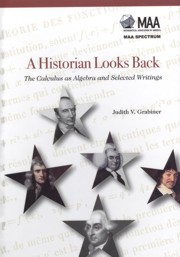Introduction
Summary
In 1869, Darwin's champion Thomas Henry Huxley praised scientific experiment and observation over dogmatism. But his criticisms extended also to the textbook view of mathematics. Huxley said, “The mathematician starts with a few simple propositions, the proof of which is so obvious that they are called self-evident, and the rest of his work consists of subtle deductions from them…. Mathematics … knows nothing of observation, nothing of experiment.” In reply, the great English algebraist J. J. Sylvester spoke about what he knew from his own work: Mathematics “unceasingly call[s] forth the faculties of observation and comparison … it has frequent recourse to experimental trials and verification … it affords a boundless scope for the exercise of the highest efforts of imagination and invention.” [3, 204]
As a historian of mathematics, I'm with Sylvester. I have long been interested in what mathematicians actually do, and how mathematics actually has developed. I have nothing against textbooks and logically structured subjects. It is just that they represent the finished product, not the creativity that produced it. The past, as L. P. Hartley said in opening his novel The Go-Between, “is a foreign country: they do things differently there.” [2, 1] Historians provide guidebooks to that past, although mathematicians tend to be more interested in knowing how that foreign past became transformed into the mathematics we know and teach today.
Mathematics is incredibly rich and mathematicians have been unpredictably ingenious. Therefore, the history of mathematics is not rationally reconstructible. It must be the subject of empirical investigation. I address the results of my own investigations not principally to other historians, but to mathematicians and teachers of mathematics.
- Type
- Chapter
- Information
- A Historian Looks BackThe Calculus as Algebra and Selected Writings, pp. xi - xviPublisher: Mathematical Association of AmericaPrint publication year: 2010



